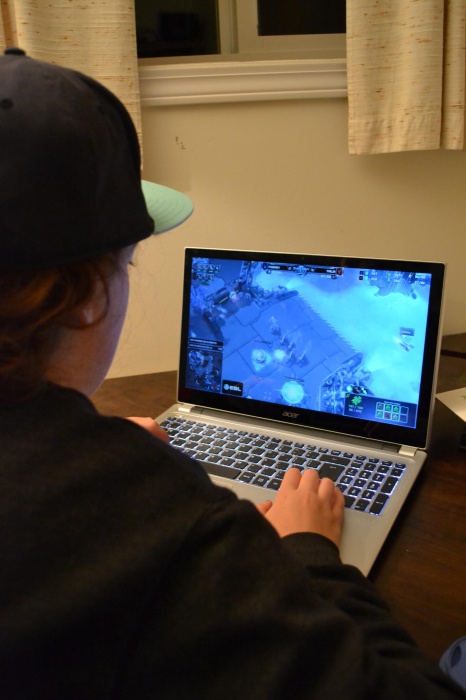Video games are big business. In 2013, consumers in the US spent over $20 billion playing video games. That’s double the amount they spent on going to the movies, and slightly more than the combined revenues of the NFL, NBA, and NHL.
Inside this 40-year-old industry, a new sector, electronic sports (or e-sports), has seen intense North American growth over the last five years.
E-sports are modelled after professional sports leagues: professional players, usually signed to a sponsored team with some sort of financial compensation, play video games and compete against each other as commentators talk over the action for the entertainment of the audience.

Sponsors pay big money to fund these tournaments so they can advertise to the millions of spectators that watch the game. In 2013, the top three e-sports games awarded $13 million in prizes alone. The same year, 32 million people watched the world championship of League of Legends, currently the most popular game in e-sports. That’s 1.5 times more eyeballs than the Stanley Cup finals.
When Starcraft II was released in 2010, it was at the vanguard of the nascent e-sports scene. Within a year, three leagues were hosting online and live tournaments that were drawing attendance numbers in the thousands.
Maru Kim, a professional Canadian Starcraft II player on team Root Gaming, better known by his gaming name “MaSa,” got his e-sports start in 2010.
“I would say it is a pretty difficult game, but as you’re learning it, it gets really fun,” says Kim.
Kim has been playing for the team Root Gaming for two years and recently competed at a live tournament in his hometown of Toronto. Despite the pressure, he enjoys playing the large tournaments.
“I think I feel a lot more pressure and I get really nervous,” he says. “When there is a crowd around you, you want to show them what you are capable of.”
No longer at the top of e-sports ladder, Starcraft has seen declining numbers the last few years, and two of the leagues that carried it have folded.
“They have to figure out how to attract the audience again,” says Kim. “It would be perfect having a bunch of casual gamers watching the pro gamers.”
The competition from other games is “hurting Starcraft, for sure,” he says, “but that needs to happen so Starcraft can develop.”
The new kid on the block is a game created by gaming company Blizzard that’s not yet released to the public: Heroes of the Storm. Thomas “Sneaky” Boccinfusco and Andrew “Grim” Nan are Canadian teammates on Team Curse. In the same genre as League of Legends, Heroes of the Storm is a multiplayer online battle arena, or MOBA.
“Unlike other MOBA games, it is completely team-based. Everybody is the same level. If you start falling behind, everybody falls behind. If you start getting ahead, everybody gets ahead,” says Boccinfusco.
Each game of Heroes of the Storm is about 20 to 30 minutes, so it’s very action-packed, points out Nan.
Dedicated athletes (“You don’t have to run around a field to be an athlete,” says Boccinfusco), the two players practice for six hours a day and run over strategy and theory in their downtime. They are banking that when Heroes of the Storm explodes, they will be able to dominate the game.
Nan is less pessimistic of the crowded market and says Heroes of the Storm will fulfill a certain niche in the gaming scene.
According to Boccinfusco, e-sports are the same as regular sports, and there are hardcore fans of different types of games.
“Like traditional sports, you can be a fan of hockey, baseball, football,” he says. “It can be the same thing, you can be a fan of Defense of the Ancients, Heroes of the Storm, or Counter-Strike.”
The landscape of e-sports hasn’t settled yet, but with billions of dollars and millions of players at stake, the future is full of potential, profit, and entertainment.
